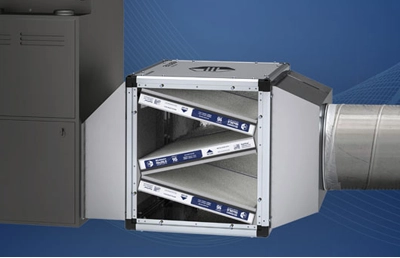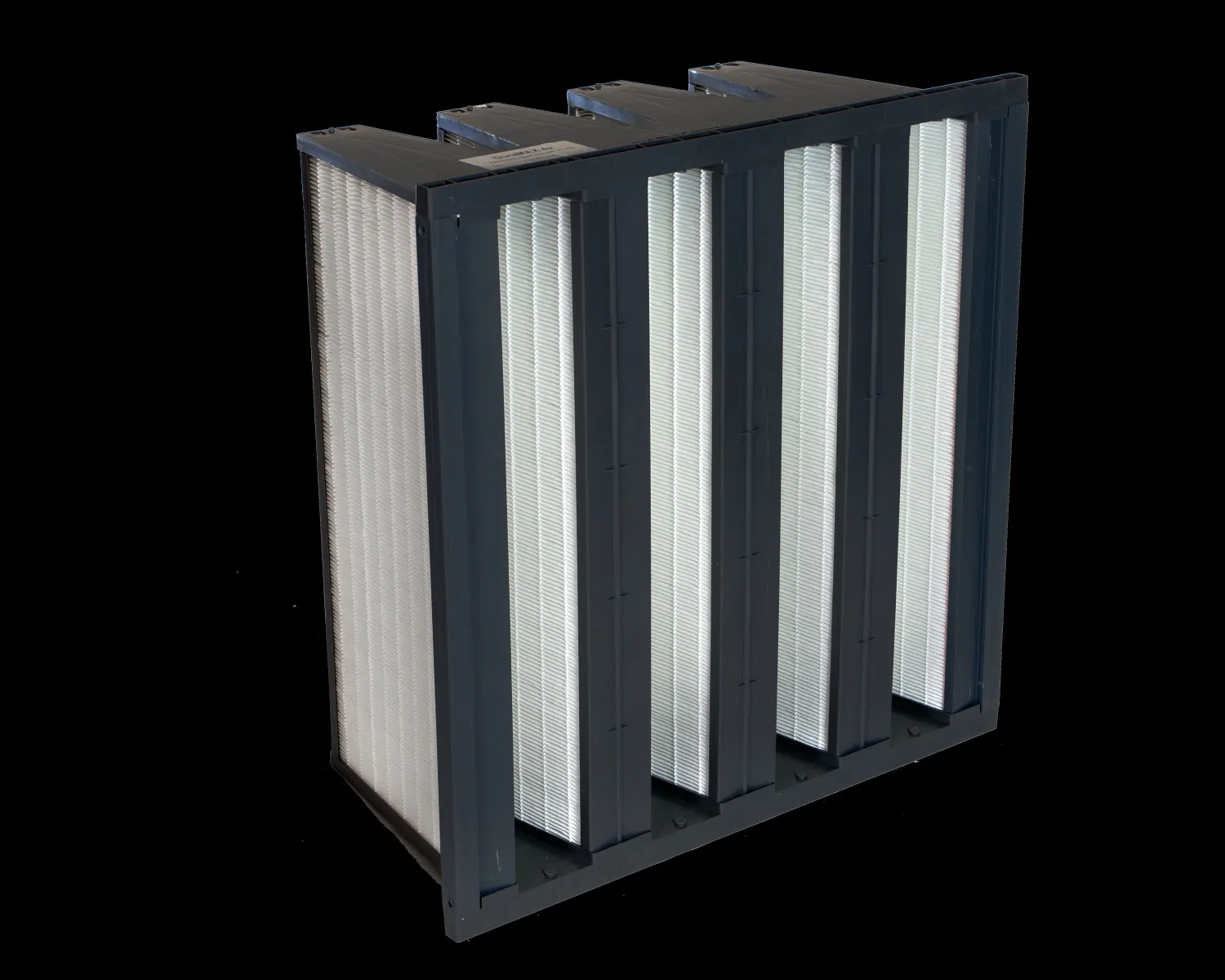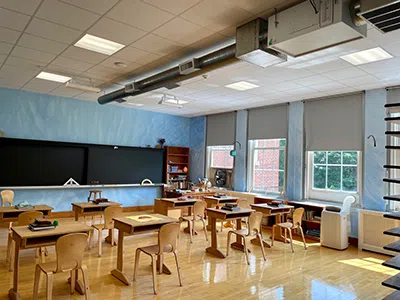Evaluating Air Filter Efficiency
Air filters perform an important function in commercial and institutional facilities as a primary defense for building occupants and HVACR equipment against indoor air pollutants. The extent to which filters remove airborne particles is referred to as filtration efficiency.
To evaluate the filtration efficiency of air filters, many people turn to MERV. The Minimum Efficiency Reporting Value is assigned to filters based on their minimum fractional particle size efficiency, as determined under the ASHRAE 52.2 Standard.
While MERV provides a simple basis for choosing a filter, to better understand the filter’s in-use performance, you also need to understand some basics about the type of media used in the filter.
There are two types of air filter media. One type, mechanical only, relies solely on its mechanical structure to filter the air. The other type of media, mechano-electret, utilizes the mechanical structure of the media and the added benefit of an electret charge. The mechanical efficiency provides for sustained filtration efficiency and the electret charge increases initial efficiency and is particularly useful for capturing submicron particles.
Two similar filters of the same MERV rating (one using mechanical only media and the other using mechano-electret media) can have different filtration efficiencies.
Indoor Air Quality and ASHRAE 52.2
The ASHRAE 52.2 test provides the efficiency of the filter over three particle size ranges: E1 (very fine particles in the 0.3 to 1.0 micrometer range), E2 (fine particles in the 1.0 to 3.0 micrometer range), and E3 (coarse particles in the 3.0 to 10.0 micrometer range). The E1, E2 and E3 ASHRAE 52.2 test values provide a more complete picture of a filter’s filtration performance over the three particle size ranges.
Many pleated filters today (especially at commonly used MERV 8) have very low E1 and E2 efficiencies. In fact, under the ASHRAE 52.2 Standard, there is no minimum requirement threshold for E1 particulate capture below a MERV 14 rating and no minimum requirement threshold for E2 particulate capture below a MERV 9 rating. It is possible, therefore, to have a MERV 8 mechano-electret media filter with better E1 particle capture than a MERV 11 mechanical-only filter.
High E1 and E2 efficiencies support healthier indoor air quality (IAQ) and help building occupants avoid illness due to poor IAQ. Most of the respirable dust and particles people breathe into their lungs is three micrometers and smaller. Lung-damaging dust, for example, can be as small as 0.5 micrometers while some bacteria can be as small as 0.3 micrometers.
It’s been estimated that 50 percent of all illnesses and 27 percent of all respiratory illnesses are attributable to poor IAQ. One could deduce, therefore, that filters with poor E1 and E2 efficiencies may be partially responsible for these illnesses, or at the very least, do little to help prevent them.
The impact of poor IAQ is staggering. Some estimates place the cost of poor IAQ to the U.S. economy at $168 billion. Part of that cost relates to direct medical care, while some of it can be traced to reduced productivity due to presenteeism (when people go to work or school even when sick) and absenteeism. It’s estimated that adults miss 14.5 million work days every year because of poor IAQ.
MERV-A Option
When ASHRAE updated Standard 52.2 in 2007, it included an Appendix not found in the previous standard: Appendix J: Optional Method of Conditioning a Filter Using fine KCL Particles. The Appendix was created to address the interest of critics of ASHRAE 52.2, who were concerned that air filters featuring an electret charge performed at high filtration efficiencies during initial testing while their filtration efficiencies could decline during actual use. Thus, they argued, the resulting MERV of the filter (as indicated by that initial test) would not represent the true minimum filtration efficiency of the filter.
The critics’ solution was to “level the playing field” by masking an electret filter’s charge. The MERV-A test that was proposed subjects the filters to extreme loads of very fine KCL (potassium chloride) particles – many times what the filter would be exposed to over its actual life. While the stated goal of this was to represent real-world conditions, it does not represent real-world conditions at all. In fact, the test was designed only to drive down the efficiency of electret filters. It represents a worst-case scenario that is likely to never happen. In addition, differences in environmental conditions and lab-to-lab variances have also been uncovered, leading to the conclusion that techniques which “condition” the filters are not repeatable.
The electret masking step is an option only, which may be conducted at the filter manufacturer’s discretion, but only if the standard, ANSI-certified 52.2 test method is conducted to determine the filter’s true performance. In fact, it is impossible to isolate the structural and physical properties of an electret-charged filter media from the charge distribution without impacting other filtration mechanisms and/or other filtration properties.
Testing under the optional Appendix J does not help you evaluate respirable particle efficiency. You’ll do your customers a service to focus on the E1 and E2 particle efficiencies on a full 52.2 test. Do not concentrate solely on the MERV, because as mentioned previously, a MERV 8 filter may provide better filtration of respirable particles and bacteria than a MERV 11 filter.
Conclusion
MERV 12 and below rated filters with poor E1 and E2 filtration efficiencies may do an adequate job of keeping larger airborne particles from fouling HVAC equipment, but they are not likely to remove the very fine respirable particles that may lead to health and productivity problems. That is why it is so important to look beyond a filter’s MERV at the Fine Particle Efficiency rating as a true measure of a filter’s filtration efficiency.
Filters containing media that provides a good balance of mechanical and electret efficiency will almost always outperform a filter with media that relies solely on mechanical-only media efficiency. For example, even at a lower MERV, mechano-electret filters can have better submicron particle capture. This superior filtration efficiency can help your customers achieve superior IAQ, which can lead to improved productivity and fewer illnesses/absenteeisms, and that helps boost business’s bottom lines.




